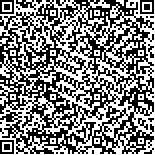| 引用本文: | 廖懿,颜合想,张诗佳,信昆仑,陶涛.监测信息深度挖掘的供水管网污染源定位[J].哈尔滨工业大学学报,2024,56(6):25.DOI:10.11918/202306057 |
| LIAO Yi,YAN Hexiang,ZHANG Shijia,XIN Kunlun,TAO Tao.Contamination source identification in water distribution network with deep utilization of monitoring information[J].Journal of Harbin Institute of Technology,2024,56(6):25.DOI:10.11918/202306057 |
|
| 摘要: |
| 为实现供水管网污染源及时准确地定位,针对配备在线水质监测设备的供水管网系统,提出一种充分挖掘水质传感器时序信息的贝叶斯方法,用于节点需水量随机波动条件下供水管网污染源定位。该方法采用蒙特卡洛模拟生成随机污染事件,构建各节点污染事件的观测信息概率分布,利用贝叶斯推断,根据传感器报警次序及时间观测信息,实时更新各候选污染节点的后验概率,并根据排序确定可疑污染源位置,同时对比不同传感器信息挖掘程度对定位结果的影响。结果表明,所提出的方法能在水质传感器报警信息累积时不断更新可疑候选节点的污染源后验概率,使候选节点个数降低,污染概率信息熵降低,能有效地识别出污染节点所在区域,且传感器信息挖掘程度越深,污染事件定位的准确率也越高。引入传感器首次报警时间作为辅助信息可以减少候选污染节点个数,降低候选节点污染源概率分布的不确定性,提高定位的准确性。 |
| 关键词: 供水管网 污染源定位 贝叶斯方法 信息挖掘 需水量随机波动 信息熵 |
| DOI:10.11918/202306057 |
| 分类号:TU991 |
| 文献标识码:A |
| 基金项目:国家水体污染控制与治理科技重大专项(2017ZX07201003);国家自然科学基金(52270093) |
|
| Contamination source identification in water distribution network with deep utilization of monitoring information |
|
LIAO Yi,YAN Hexiang,ZHANG Shijia,XIN Kunlun,TAO Tao
|
|
(College of Environmental Science and Engineering, Tongji University, Shanghai 200082, China)
|
| Abstract: |
| To achieve timely and accurate identification of contamination source in water distribution networks, a sequential Bayesian method was proposed specifically for water distribution systems equipped with online water quality monitoring devices. The method utilized temporal information from water quality sensors to identify the contamination source in water distribution network with stochastic fluctuation in water demand. Monte Carlo simulations were conducted to generate contamination events and establish the observation probability distribution function for each node. Then this information was used to compute the posterior probability of each possible source for the observed alarm pattern in real time by using Bayesian inference. Finally, the contamination source was identified by ranking the posterior probabilities. Furthermore, the influence of different utilizations of sensor information on the identification results was also compared. The results show that the proposed method enables continuous updating of the posterior probabilities of suspicious nodes when sensor information is gathered, resulting in fewer candidate nodes and lower information entropy. The method can effectively identify the contamination source, and the accuracy of contamination source identification improves with deeper utilization of sensor information. Introduction of initial alarm time as auxiliary information can reduce the number of candidate nodes and reduce the uncertainty in probability distribution of suspicious contamination nodes, thus improving the accuracy of identification. |
| Key words: water distribution network contamination source identification Bayesian approach information mining stochastic fluctuation in water demand information entropy |







